This is a continuation of a series of posts on the Nikon D850. The series starts here. You should be able to find all the posts about that camera in the Category List on the right sidebar, below the Articles widget. There’s a drop-down menu there that you can use to get to all the posts in this series; just look for “D850”.
Yesterday, I reported on how the AF Adjust setting of the D850 affects the movement of the image-field (sensor-side) focal plane. I found that, with the Nikon 105 mm f/1.4E lens, that the change in image focal plane was linear with AF Adjust setting, and that each increment of the AF Adjust setting moved the image focus plane about 4 micrometers (um). This was independent of f-stop — I only tried f/1.4 and f/4, though.
Does the amount of image focal plane movement with AF Adjust setting vary with the focal length of the lens? I thought a good way to get at that would be to run the same test again, but this time with a lens of about half the focal length, the Nikon 58 mm f/1.4.
The results at f/1.4, for just the green Adobe RGB plane, and for all three color planes:
You can see that there’s quite a bit of longitudinal chromatic aberration (LoCA) with that lens. What you can’t see here is that it’s not very sharp on-axis at f/1.4, so it’s harder to determine the focal plane than it would be with a lens that’s really sharp wide open.
Here’s a run of the sharpness of one exposure out of the 110 that are distilled in the above graph:
Both the raw data and the curves fitted to it are plotted.
When you stop the lens down to f/4, it gets a lot sharper:
For the f/4 run, the summary graphs look like this:
This looks to me like between 4 and 5 um per AF adjust step. The f/1.4 data indicated about 3 um. So it looks like 4 um is still a pretty good rough estimate.
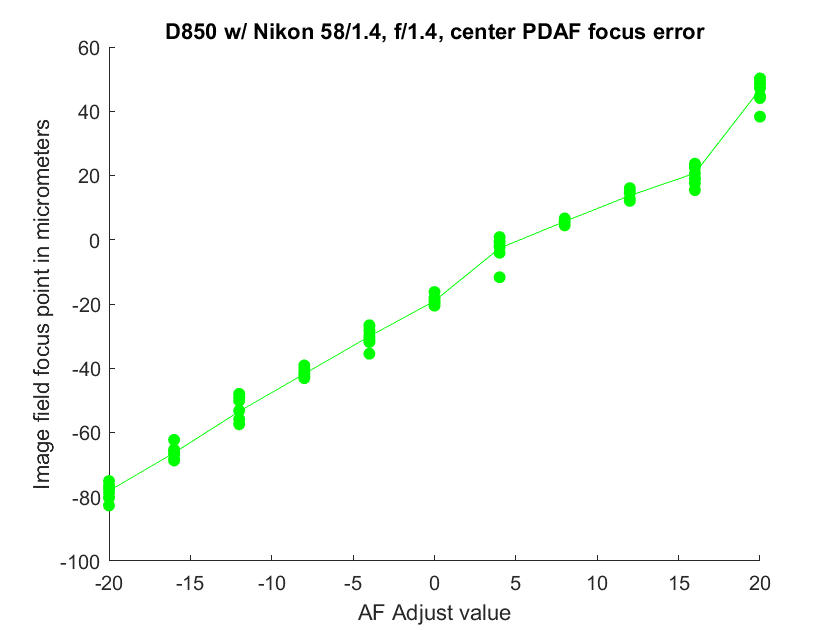
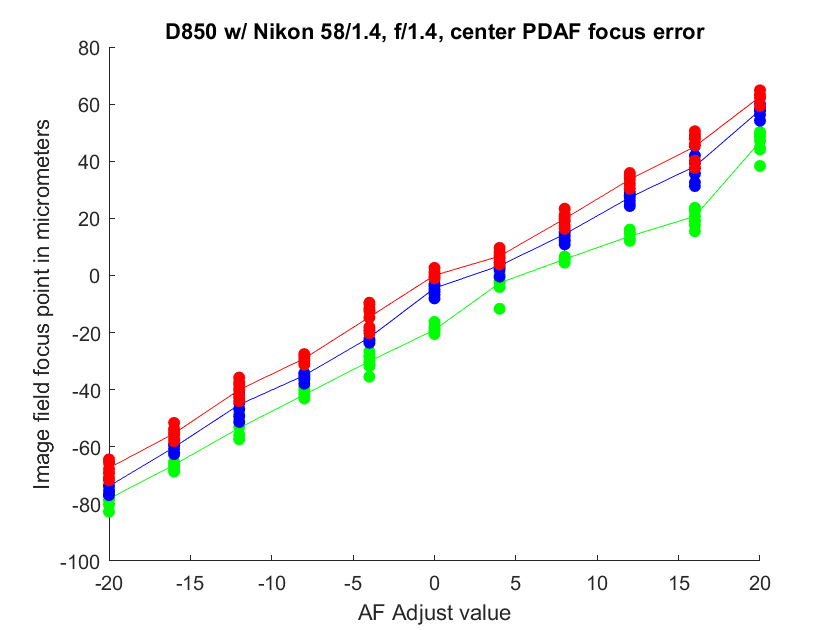
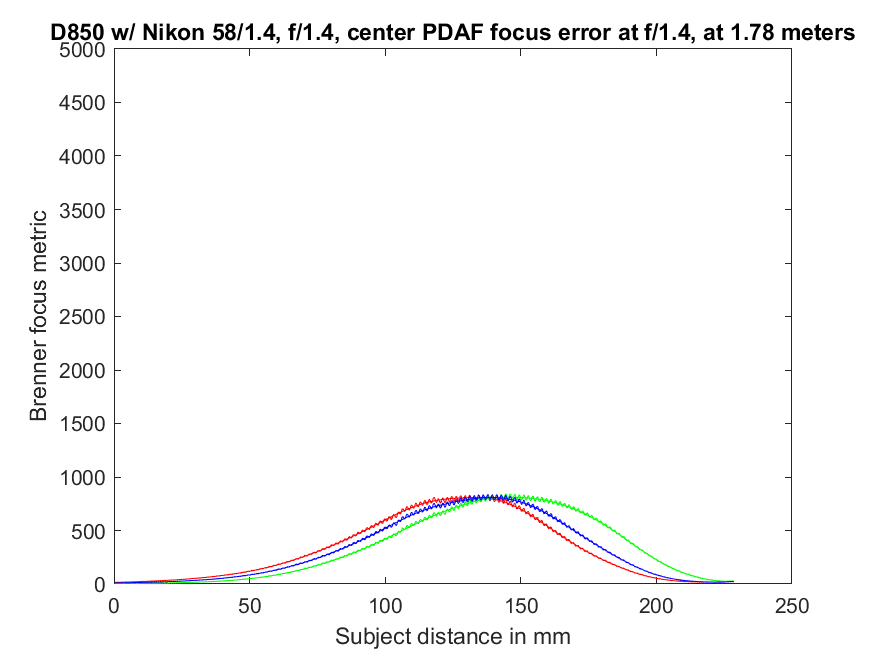
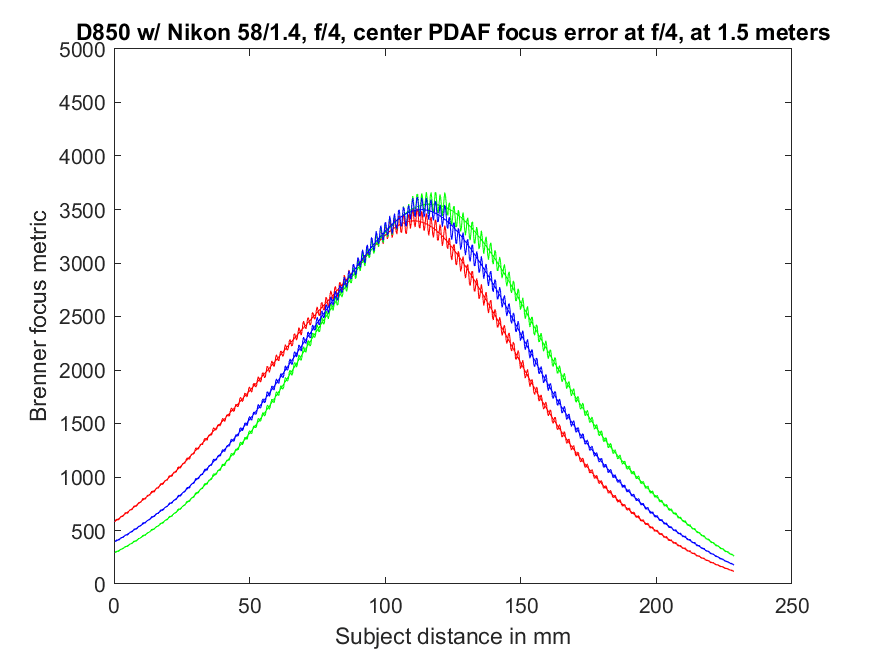
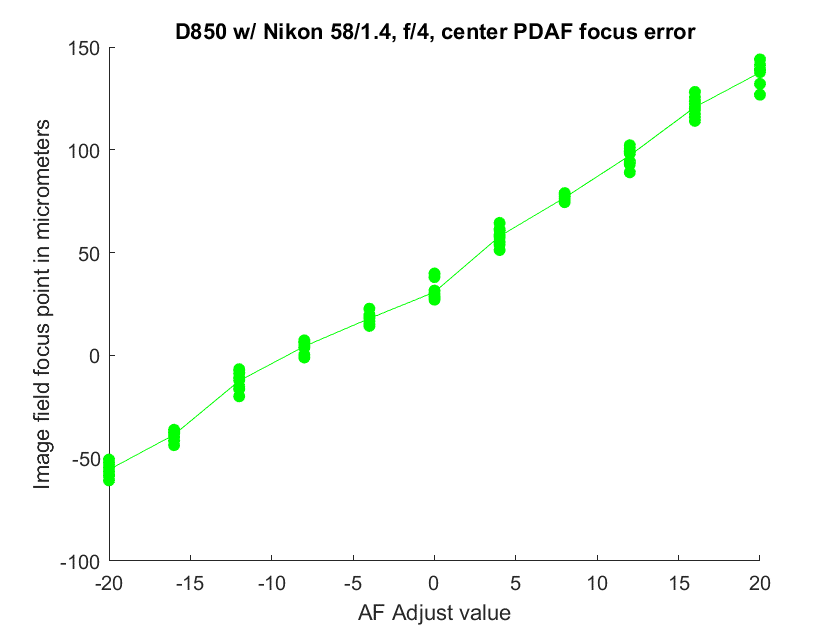
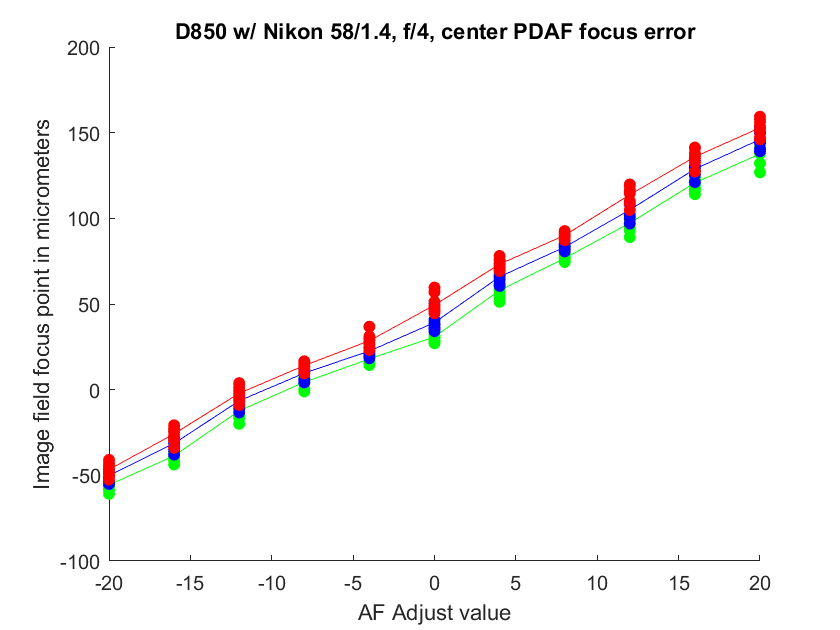
Leave a Reply